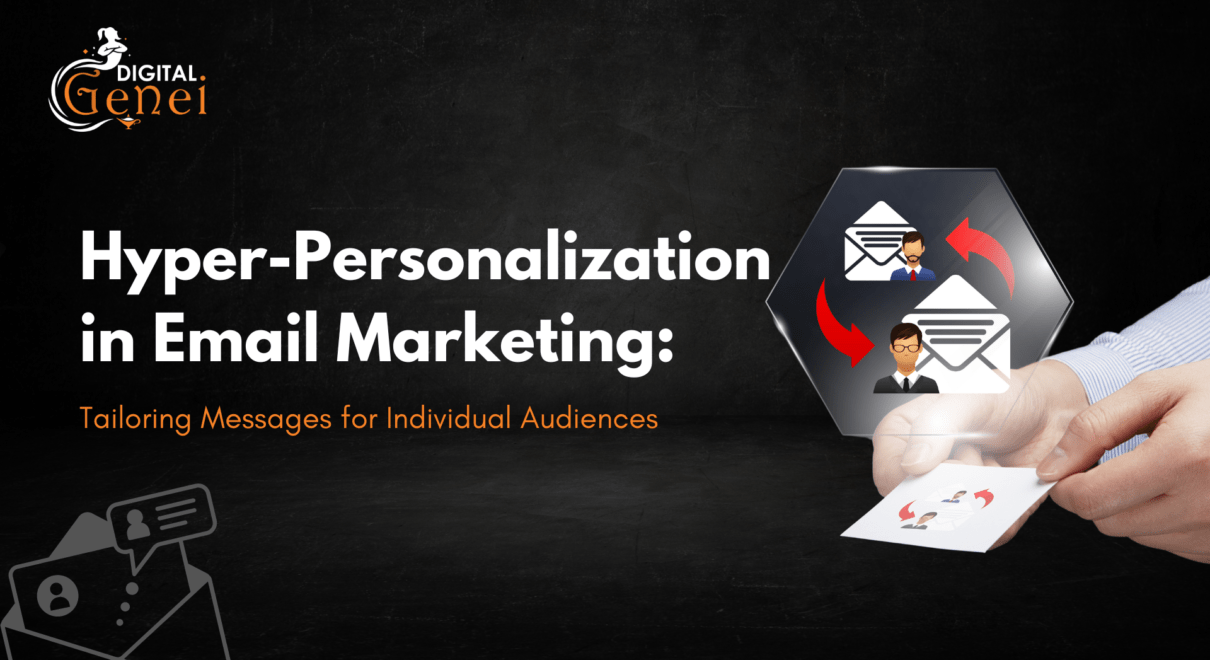In the bustling world of digital marketing, where every message fights for attention, the ability to personalize content has become a game-changer. Email marketing, once a mass communication tool, has evolved into a hyper-personalized experience, addressing the unique needs of individual consumers. This paradigm shift from generic to tailored content holds the key to unlocking higher engagement and conversion rates in the digital landscape.
1. Understanding Hyper-Personalization
Hyper-personalization is an advanced approach to email marketing that goes beyond using the recipient’s name in the subject line. It delves deep into understanding the recipient’s preferences, behaviors, and demographics to craft emails that resonate with them on a personal level. It involves:
Behavioral Analysis:
Collect and analyze data on user behavior, such as website visits, product interactions, and previous email engagement. This information helps in creating a personalized user profile.
Segmentation:
Divide your email list into smaller, highly targeted segments based on specific criteria like location, purchase history, interests, or engagement level.
Dynamic Content:
Create email templates with dynamic content blocks that change based on the recipient’s profile or behavior. This ensures that each email is tailored to the individual.
Predictive Analytics:
Utilize predictive analytics to anticipate the recipient’s needs and preferences. This can include recommending products, suggesting content, or reminding them of abandoned shopping carts.
2. Benefits of Hyper-Personalization
Improved Engagement:
Personalized emails have a significantly higher open and click-through rate. When recipients see content that resonates with them, they are more likely to engage.
Higher Conversions:
Tailored product recommendations and content suggestions increase the chances of conversion, leading to more sales and revenue.
Customer Loyalty:
Hyper-personalization creates a stronger emotional connection with the audience. This, in turn, fosters brand loyalty and trust.
Reduced Unsubscribes:
By sending relevant content, you reduce the likelihood of subscribers opting out of your emails. Your messages become a valuable resource, not an annoyance.
Data-Driven Insights:
The data collected for personalization provides valuable insights into customer behavior, enabling you to refine your marketing strategy.
3. Implementing Hyper-Personalization
Now that we understand the importance and benefits of hyper-personalization, let’s explore how to implement it effectively in your email marketing strategy.
Data Collection
Start by gathering as much data as possible about your subscribers. This includes their demographics, past interactions, purchase history, and browsing behavior. Use tools like Google Analytics, CRM software, and email marketing platforms to track and analyze this data.
Segmentation
Divide your email list into segments based on common characteristics or behaviors. Create personas for each segment to better understand their needs and preferences.
Dynamic Content
Design email templates that incorporate dynamic content blocks. These blocks can display different product recommendations, images, or text based on the recipient’s profile and behavior.
Personalized Subject Lines
Craft subject lines that are relevant to the recipient’s interests or past interactions. This increases the likelihood of your email being opened.
A/B Testing
Continuously test and refine your email content. Experiment with different personalization techniques and measure their effectiveness. This helps in fine-tuning your strategy over time.
Automate Workflows
Utilize marketing automation tools to trigger personalized emails based on specific actions or events, such as abandoned cart reminders, birthday emails, or post-purchase follow-ups.
Monitor and Analyze
Regularly review the performance of your hyper-personalized email campaigns. Pay attention to metrics like open rates, click-through rates, and conversion rates to identify what’s working and what needs improvement.
Conclusion
Hyper-personalization in email marketing is no longer a luxury but a necessity for businesses looking to stay competitive in the digital landscape. By tailoring messages for individuals, you can forge deeper connections with your audience, drive higher engagement, and ultimately boost your ROI. Remember that successful hyper-personalization relies on collecting and analyzing data, segmenting your audience effectively, and creating dynamic content that resonates with each recipient. As you refine your strategy, you’ll find that hyper-personalization is a powerful tool for building lasting customer relationships and driving business growth.




